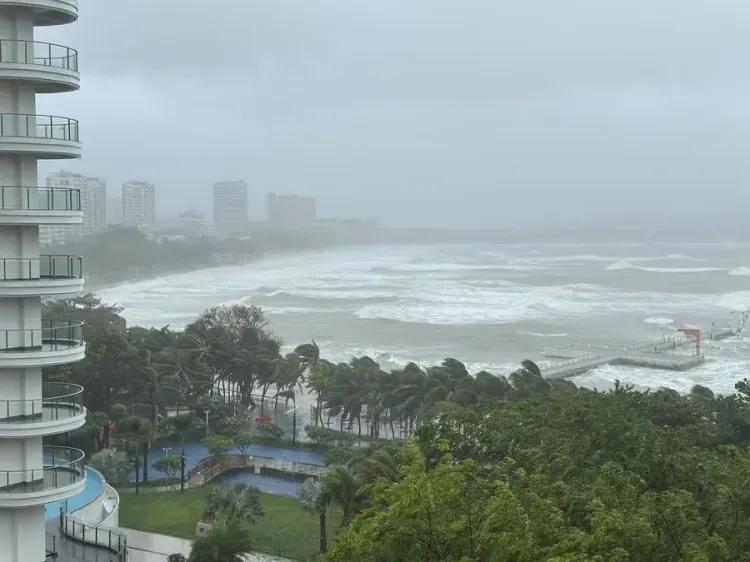Did Typhoon Co-May Just Hit China's Zhejiang Province?

Synopsis
Key Takeaways
- Co-May is the eighth typhoon of the year, making landfall in Zhejiang Province.
- Maximum wind speeds reached 23 meters per second.
- An emergency response level of III has been enacted.
- Heavy rainfall is expected across multiple provinces.
- Authorities are urging flood control measures to protect lives.
Hangzhou, July 30 (NationPress) Co-May, the eighth typhoon of this year, made landfall in eastern China's Zhejiang Province at approximately 4:30 a.m. on Wednesday, as reported by the provincial meteorological observatory.
The typhoon, with peak winds near its center clocking in at 23 meters per second, came ashore at Zhoushan City in Zhejiang, according to Xinhua news agency.
The province elevated its emergency response level for Typhoon Co-May from IV to III at 3:00 p.m. on Tuesday, as stated by the provincial emergency management department.
China employs a four-tier emergency response system, where Level I is the most critical.
On July 28, China's Ministry of Water Resources initiated a Level-IV emergency flood response across four provincial-level regions—Shanghai, Jiangsu, Anhui, and Jiangxi—due to Typhoon Co-May, the eighth typhoon this year.
Forecasts predict heavy rainfall until Saturday in areas such as Zhejiang, Shanghai, Anhui, Jiangsu, and Jiangxi. Water levels in rivers and waterways around Taihu Lake are anticipated to rise sharply, with several small and medium rivers potentially exceeding flood warning thresholds.
On Monday, the ministry also activated a Level-IV response in Xinjiang and the Xinjiang Production and Construction Corps due to flooding driven by snowmelt amid prolonged high temperatures. Flooding along the Tarim River and its tributaries is expected to continue until mid-August.
Authorities have urged close monitoring of weather conditions, issuing early warnings, and enhancing flood control measures to protect lives and property.
The typhoon is projected to move northwest at a speed of 15 to 20 km per hour, approaching the eastern part of the East China Sea and nearing the coastal regions of Zhejiang while gradually gaining strength.
Typhoon Wipha, the seventh typhoon of the year, has also affected China, particularly impacting Hong Kong and Guangdong province with severe winds and heavy rain. This storm caused major disruptions to air travel, public transportation, and everyday life in Hong Kong, resulting in hundreds of flight cancellations and the suspension of transport services. The storm also led to flooding in low-lying areas and stranded residents in various locations.
On Monday, water conservancy authorities announced China's No.1 flood alert for significant rivers in 2025 along the Luanhe River, situated within northern China's Haihe River Basin.
Due to recent intense rainfall, the Luanhe River has seen a rise in water levels. At 4:30 a.m. on Monday, the inflow rate at the Panjiakou Reservoir on the Luanhe River's main stream surged to 2,270 cubic meters per second, as reported by the Haihe River Water Conservancy Commission of the Ministry of Water Resources.









